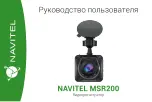
Chapter 5
Theory of Operation
23
illustrates the time delay between each row of pixels in a rolling
shutter readout mode with a CMOS camera.
Figure 5-1: Rolling Shutter Exposure Row by Row Exposure Start/End Offset
A disadvantage of Rolling Shutter readout is that any changes in the scene on
similar time scales is distorted, as each row samples the image at different
times. This is the well-known “rubber band” effect, but can appear in
fluorescence microscopy as shaded illumination when rapidly changing
wavelengths.
To maintain the benefit of Rolling Shutter readout and eliminate rolling shutter
artifacts, external illumination can be gated on when all rows are being
simultaneously exposed, and off during the readout phase. This external
triggering mode used in combination with high speed light sources (e.g., lasers,
LEDs,) achieves a pseudo-global shutter effect. This triggering mode is
described in
Section 6.3, Device Synchronization (Triggering)
, on page 27.
Unlike CCDs, there is limited benefit to performing multiple pre-exposure clearing
cycles with CMOS, because each pixel is reset as part of the normal readout process,
and the charge transfer registers that can hold residual signals are not present.
5.4
Bias Offset
Scientific cameras produce a fixed artificial signal offset known as bias offset. This offset
is present even when no light is falling on the sensor and the exposure time is set to
zero. This preserves quantization even down to signals of a few electrons per pixel.
Typically, the user subtracts this offset before performing quantitative analysis
post-acquisition.
The recommended protocol is to capture a new series of bias frames at the start of each
experimental run. The series of frames can be averaged to remove noise, then used to
remove the bias offset during subsequent image analysis. This can also be used to
monitor for light leaks and other systematic effects that can impact experimental
results.
NOTE:
The specific Bias Offset value for each Kuro camera is
programmed at the factory and is not user-configurable. A
typical Bias Offset value is approximately 100 counts.
4
4
11-
015
9
_000
8
Row 0
Row 1
Row 2
Row 3
Row (N–1)
Row N
1 x Line Time
2 x Line Time
3 x Line Time
[N–1] x Line Time
N x Line Time
Summary of Contents for Kuro
Page 1: ...www princetoninstruments com Kuro sCMOS Camera System Manual 4411 0159 Issue 2 March 28 2019...
Page 6: ...6 Kuro sCMOS Camera System Manual Issue 2 This page is intentionally blank...
Page 18: ...18 Kuro sCMOS Camera System Manual Issue 2 This page is intentionally blank...
Page 24: ...24 Kuro sCMOS Camera System Manual Issue 2 This page is intentionally blank...
Page 34: ...34 Kuro sCMOS Camera System Manual Issue 2 This page is intentionally blank...
Page 42: ...42 Kuro sCMOS Camera System Manual Issue 2 This page is intentionally blank...
















































